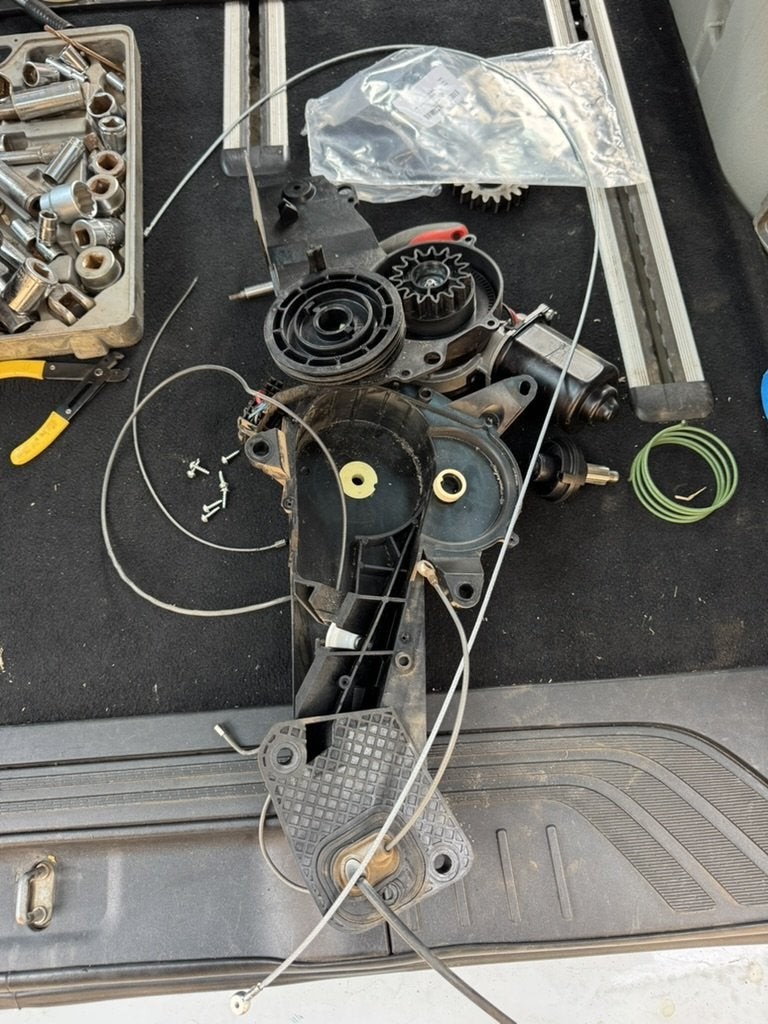Is your car door cable broken? Many car owners face the frustrating issue of malfunctioning door cables, often leading to the assumption that a complete and expensive motor assembly replacement is necessary. However, in many cases, you can save significant money by simply repairing or replacing the door cables themselves. This guide, brought to you by Car Repair Online experts, will walk you through understanding the door cable system and how to approach a repair, potentially saving you hundreds of dollars compared to a full motor assembly replacement.
Often, the culprit is not the entire motor mechanism but rather the cables within the auto door assembly. The internal gears of these systems are typically robust and don’t wear out easily. The mechanism is relatively straightforward: it uses a short cable to pull the door closed and a longer cable, guided by a pulley, to open it. More often than not, it’s the longer, thinner cable responsible for opening the door that snaps due to repeated stress and use. While manufacturers might suggest replacing the entire motor assembly, which can cost upwards of $1000, understanding the system allows for a more targeted and economical fix.
The motor unit itself is generally accessible once you remove the interior door panel. Inside, you’ll find pulleys that wind the short and long cables to control the door’s opening and closing actions. Disassembly usually involves removing a few screws, granting you access to the cable system. It’s wise to take pictures as you disassemble the unit; this visual record will be invaluable when you’re putting everything back together, especially in noting the positioning of gears. The pulley system typically consists of stacked pulleys for the long and short cables, secured by a central gear pin.
When you examine the cable system, you’ll likely notice how the long cable is positioned. It usually sits along the guide rail and car body, with its end winding around a white pulley. This pulley cap then snaps into the middle hinge pin, playing a crucial role in the door-opening action.
Conversely, the short cable connects to the opposite pin on the middle hinge. Its function is to pull the door closed. Understanding these connections is key to successfully performing a door cable repair.
When working with the cables, pay special attention to the rubber grommet where the cables pass through. This rubber piece is the primary barrier against dust and debris entering the motor assembly and the car’s interior. Treat this rubber with care during removal and replacement. Using a rubber grease, like Spanjaard Red Rubber Grease, can help revitalize and protect it, ensuring a good seal. However, be careful not to leave excess grease that might attract dust.
Crucially, avoid using oil-based lubricants like Q20 or similar sprays on the guide rails or wheels of the door mechanism. These components require a dry lubricant to function correctly without attracting dirt and grime. A dry lube, such as the Kent product shown, is more appropriate for these parts.
After replacing the cables, you’ll likely need to program the door system to recognize the closed position. This is often done using an OBD plug interface to access the car’s computer and perform a “teach-in” process or special function. Many tire shops or independent garages have the necessary OBD tools, offering a more affordable option than going to a dealership.
By opting for a door cable repair instead of a full motor assembly replacement, you can expect to spend significantly less – typically around $40-$50 for a cable kit, depending on the supplier. The time investment is also reasonable; if you’re new to removing car panels, setting aside a day for this repair is advisable. With a bit of patience and this guide, repairing your car door cables yourself is an achievable and budget-friendly solution.

